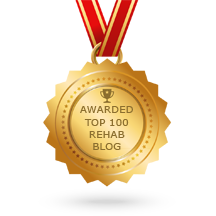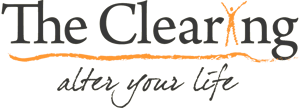
In November 2016, the Surgeon General made history by releasing an in-depth report on addiction in the United States.
Surgeon General Dr. Vivek H. Murthy compares this report to the milestone Surgeon General report on the dangers of smoking, which was published in 1964.
The new report states that over 20 million Americans are addicted to drugs, but only about 10% are receiving any sort of addiction treatment. Get the full summary here.
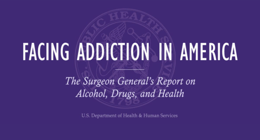 Titled, Facing Addiction in America: The Surgeon General’s Report on Alcohol, Drugs, and Health, the groundbreaking 428-page report is the first of its kind from the Surgeon General’s office.
Titled, Facing Addiction in America: The Surgeon General’s Report on Alcohol, Drugs, and Health, the groundbreaking 428-page report is the first of its kind from the Surgeon General’s office.
This is a deep report, full of heretofore unavailable data on the magnitude of the addiction epidemic in America.
One of the many insights noted in the report: most people who have a dual diagnosis - an addiction coupled with a mental health concern - aren’t receiving treatment for either condition.
Facing Addiction in America Report Organization
Facing Addiction in America is divided into these chapters:
- Introduction
- Neurobiology of Addiction
- Prevention Programs
- Treatment of Substance Abuse
- Recovery
- Health Care Systems
- Public Health
Here's a quick summary of each major section:
| Chapter | One-Sentence Summary |
| Introduction and Overview of the Report | This section clarifies the extent of addiction and substance abuse issues in the US; in a word, massive. |
| The Neurobiology of Substance Use, Misuse, and Addiction | This section discusses how your brain physically changes through addiction; in a word, massively. |
| Prevention Programs and Policies | This section shares the general and targeted programs and policies proven to help stop addiction before it starts. |
| Early Intervention, Treatment, and Management of Substance Use Disorders | This section emphasizes that real, substantive professional treatment is crucial, and discusses how to help people access such treatment. |
| Recovery: The Many Paths to Wellness | This section expands on the question, "Who and what actually helps people to stay sober and build lives they love?" |
| Health Care Systems and Substance Use Disorders | This section poses the question, "How can we connect general health care with addiction treatment, instead of separating the two as we have in the past?" |
| Vision and Recommendations | This section looks ahead and suggests concrete steps to alleviate substance abuse across the country. |
In this post, we'll provide an overview and summary of Facing Addiction in America, look at mainstream media responses, discuss what's driving the addiction epidemic, and offer our unique perspective on what works in addiction treatment and addiction recovery programs.
As we're a residential treatment center, we'll focus our response on treatment issues. That’s our area of expertise, and that’s where we can contribute most to the larger conversation.
Media Responses to Facing Addiction in America
Major media outlets such as NPR, Scientific American, the New York Times, US News and World Report, and Business Insider have all posted responses to Facing Addiction in America.
Many lauded the report for its candid treatment of addiction as a brain disease, not a moral failing. Some articles noted that the lingering addiction and mental health stigma prevents people from seeking treatment.
The articles also did a good job with the facts and figures. Most publications included statistics such as the increase in overdose deaths and the numbers involved in America’s escalating opioid crisis.
They also discussed health care costs, and the reasons why quality addiction treatment is less costly than no treatment.
For example, USA Today quoted Surgeon General Vivek Murthy as saying,
“Every $1 invested in viable treatment options for substance use disorders saves $4 in health care costs and $7 in criminal justice costs.”
But let's take a moment to address some key questions:
- Has there really been a dramatic increase in opioid addiction deaths?
- And if so, how did things get so out of control in the first place?
America's Escalating Opioid Crisis
Painkiller and opioid addiction isn't a small-scale problem in America anymore. On the contrary, it claims tens of thousands of lives each year.
As you can see from these data from the National Institute on Drug Abuse, the number of national overdose deaths for all prescription drugs has more than doubled from 2001-2013.
We also know that opioids are the chief culprits in the crisis. As we wrote in our blog post America’s Escalating Opioid Crisis:
"Opioid addiction is driving this [overdose] epidemic, with 18,893 overdose deaths related to prescription pain relievers, and 10,574 overdose deaths related to heroin in 2014, according to ASAM, the American Society of Addictive Medicine."
But what's driving the opioid epidemic specifically?
In a nutshell, multiple medical and legislative factors converged in the 1990s to increase the number of opioid prescriptions written by doctors.
Then, when the government tried to limit prescriptions, people who had become addicted to their pills were in trouble. They needed a fix, so they turned to substances such as heroin and fentanyl.
But while heroin and fentanyl are cheaper than pills, they're also very dangerous ... hence the increase in overdose deaths.
The Neurobiology of Addiction
Opioids are powerful drugs that alleviate physical, mental, and emotional pain ... and they also train your brain to want more.
Chapter Two of Facing Addiction in America covers the Neurobiology of Addiction, reminding us that changes to certain parts of the brain (the basal ganglia, extended amygdala, and the prefrontal cortex) drive addiction.
What disruptions to these areas make such a big difference?
- First, narcotics prime your brain to seek out more drugs by providing you with more cues and habit triggers. They literally make you want drugs more.
- Next, narcotics decrease your brain's felt experience of pleasure and increase your felt experience of stress (thus prompting you to seek more of the drug to feel better).
- Finally, narcotics lessen the activity in the areas of your brain that are assigned to "executive control" ... meaning that you have less brainpower available for impulse control and wise decision making.
In other words, taking narcotics physically changes your brain in such a way as to make it much more difficult to stop taking drugs!
Addiction Prevention Programs and Policies
What's the most effective way to decrease the number of people who struggle with addiction? To prevent people from becoming addicted in the first place!
That's much easier said than done. But we can learn from the findings outlined in Chapter 3 of the Surgeon General's Report. Here are some key takeaways:
- There are lists of proven risk factors we can look at to predict who might struggle with addiction issues (see below).
- Tailored prevention programs can help people of all ages.
- Local community involvement is key to successful addiction prevention programs.
- Decreasing the availability and increasing the cost of alcohol can help prevent binge drinking.
- Legislation related to driving while intoxicated has helped to reduce the number of alcohol-related traffic deaths.
Addiction Risk Factors:
- Early initiation of substance use
- Early and persistent problem behavior
- Rebelliousness
- Favorable attitudes toward substance use
- Peer substance use
- Genetic predictors
- Family monitoring problems
- Family conflict
- Favorable parental attitudes
- Family history of substance abuse
- Academic failure beginning in late elementary school
- Lack of commitment to school
- Low cost of alcohol
- High availability of substances
- Community laws and norms favorable to substance use
- Media portrayal of alcohol use
- Low neighborhood attachment
- Community disorganization
- Low socioeconomic status
- Transition and mobility
Principles of Effective Addiction Treatment
 A discussion of what constitutes effective addiction treatment was noticeably absent from major media coverage.
A discussion of what constitutes effective addiction treatment was noticeably absent from major media coverage.
Yet one of the most powerful parts of the Surgeon General’s report is its list of principles of effective treatment for adults.
In an industry that lacks a common standard of care, this list of 13 principles can help individuals to decide which treatment program is right for them.
The Surgeon General's Principles of Effective Addiction Treatment for Adults
(source: Chapter 4 of Facing Addiction in America)
| Addiction Myth | Principle of Effective Addiction Treatment | Our Experience and Observations |
| Addiction is a failure of willpower; it's for the weak and lazy. | #1: Addiction is a complex but treatable disease that affects brain function and behavior. | Most of our Participants have two things in common: they're smart and they're sensitive. They turned to addiction as a way to cope with mental and emotional pain. |
| 12 Step Groups work for everyone. | #2: No single treatment is appropriate for everyone. | 12 Step groups do work for some people, but others - particularly those with dual diagnosis - require a different approach. |
| Treatment doesn't do any good; why bother? | #3: Treatment needs to be readily available. | When people are ready to do the work of healing, a treatment program that addresses underlying core issues can help them to change their lives. |
| All you need is coping strategies to prevent drug use. | #4: Effective treatment attends to multiple needs of the individual, not just his or her drug abuse. | We find that drug use isn't really about the drugs; it's about the untreated mental and emotional hurt. When you heal the hurt, you don't have to use anymore. That’s why we’re focused on holistic addiction treatment, empowering people to heal on all four levels of self: physical, mental, emotional, and spiritual. |
| Doing a quick drug detox is all anyone needs to recover. | #5: Remaining in treatment for an adequate period of time is critical. | Our Program runs for 28 days (and continues with Aftercare) because forming new habits and breaking old patterns takes time. |
| Therapy is just a waste of money. | #6: Behavioral therapies -- including individual, family, or group counseling -- are the most commonly used forms of drug abuse treatment. | Therapeutic counseling from licensed professionals makes a big difference ... that's why our Program provides 120+ hours of counseling. |
| Medications just keep you stuck; you shouldn't need them. | #7: Medications are an important element of treatment for many patients, especially when combined with counseling and other behavioral therapies. | We see medications as a stepping stone to sobriety. |
| Set one plan and stick to it no matter what. ("Go to meetings every day for the rest of your life.") | #8: An individual’s treatment and services plan must be assessed continually and modified as necessary to ensure that it meets his or her changing needs. | Different stages of the recovery journey require different strategies. Work with your support team to design a plan that's right for you. |
| Addiction and mental health concerns are totally separate issues. | #9: Many drug-addicted individuals also have other mental disorders. | We would say, "Most drug-addicted individuals also have other mental disorders." This is extremely important, because it affects treatment. The technical term for this is dual diagnosis, and it represents the new standard of care when it comes to addiction. |
| Detox is all you need to get clean and stay clean. | #10: Medically assisted detoxification is only the first stage of addiction treatment and by itself does little to change long-term drug abuse. | Detox is important, but it’s just a precursor to mental and emotional recovery work. |
| You have to hit rock bottom and check yourself into rehab to recover. | #11: Treatment does not need to be voluntary to be effective. | While we acknowledge that some people who enter an addiction recovery program against their will may recover, we believe that voluntary treatment is by far the most effective. A prerequisite for our Program is a strong desire to heal and a commitment to do the work of recovery. This is part of why we have a success rate of over 80%: we only welcome Participants who are serious about their own healing. |
| Once someone is in treatment, slips don't happen. | #12: Drug use during treatment must be monitored continuously, as lapses during treatment do occur. | We support our Participants in preventing slips by searching belongings upon arrival and providing clear safeguards and boundaries. We have qualified medical personnel on staff to dispense necessary medications and attend to post-detox medical needs. Finally, we also have an initial grace period in which Participants can turn in any drugs they brought to the estate. There's no guilt and no shame with us. |
| You "just know" if you have HIV or another infectious disease. | #13: Treatment programs should test patients for the presence of HIV/AIDS, Hepatitis B and C, tuberculosis, and other infectious diseases, provide risk-reduction counseling, and link patients to treatment if necessary. | Though our Participants come to us post-detox, we support them in getting necessary blood testing for infectious diseases. Our staff personally accompanies Participants to testing facilities when needed, and offers support when results come in. |
Common Myths About Addiction
From our point of view, the Surgeon General's report is important because it dispels common myths about addiction and provides clarity on what really promotes recovery.
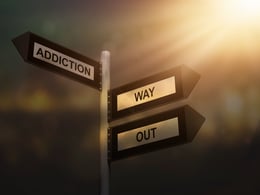 Several key findings in the addiction treatment section are backed by well-supported scientific evidence. These include (but are not limited to):
Several key findings in the addiction treatment section are backed by well-supported scientific evidence. These include (but are not limited to):
- It is possible to treat addiction.
- With the right supports in place, recovery is within reach. - Medications can help with treating severe addictions.
- That said, opioid addiction medications such as buprenorphine are stepping stones.
- These drugs can help you to get clean, but at that point you must do your own mental and emotional work to maintain your sobriety. - In the long run, it costs less to treat substance abuse properly than it does to leave it untreated.
- Yes, good addiction recovery programs do cost money, but it’s better than the alternative. - Behavioral therapies are effective in addiction treatment, but it’s difficult to find consistent, evidence-based therapeutic support.
- The Surgeon General's report specifically mentions Cognitive Behavioral Therapy (CBT) and Motivational Enhancement Therapy (MET), both of which we utilize in our addiction recovery program.
- One reason why our success rate is above 80% is that we provide over 120 hours of therapy.
- Moreover, we teach our Participants how to support themselves once they graduate.
Roadblocks to Addiction Treatment: Insurance Coverage
Also of interest in the addiction treatment section is the breakdown of reasons why people do not seek treatment.
Aside from the 40.7% of people who said they were not ready to stop using, the most commonly cited reason for not getting treatment was: “Do not have health care coverage/could not afford”.
Why People Do Not Seek Treatment for Addiction
(source: Chapter 4 of Facing Addiction in America)
| Reason | Percentage |
| Not ready to stop using | 41% |
| No healthcare coverage/could not afford care | 31% |
| Belief that seeking treatment would have a negative impact on work | 16% |
| Don't know where to go for treatment | 13% |
| Lack of transportation / program too distant / hours too inconvenient | 12% |
| Can't find a program with the desired treatment | 11% |
| Belief that seeking treatment would incur the negative opinions of others | 8% |
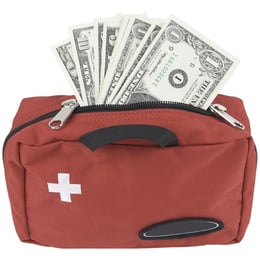
We’ve seen how difficult it can be for our Participants to receive insurance coverage for certain aspects of their care.
For example, many insurance providers are reluctant to cover any inpatient detox; they prefer outpatient detox programs only, because they cost less.
(Since inpatient detox is not a part of our Program, we partner with specialized detox facilities to ensure that our Participants arrive at the estate drug-free.)
As a standalone treatment, medical detox isn’t enough to end most addictions. But it’s extremely helpful when used in conjunction with dual diagnosis treatment for mental health issues.
And inpatient detox is vital when an individual is at serious risk of relapse and has significant health care needs.
Insurance coverage is important, but then, so is effective support. Unfortunately, the two don’t always go hand in hand. As we wrote in our post How We Created the Most Transformative Addiction Recovery Program in the US:
“Rather than thinking about traditional residential rehab practices or what insurance would pay for, we drew up a list based on what would really help those suffering from addiction to heal.
As a result, we focus on the underlying core issues that limit the lives of individuals with addiction.”
What Does Addiction Recovery Look Like?
This chapter emphasizes that when it comes to addiction recovery, one size does not fit all! Recovery means different things to different people, but these key findings are true across the board ...
- Recovery means more than just "not using drugs." It means changing your entire life for the better.
- People really do recover from drug and alcohol addictions. Healing can be challenging, but it is possible. Recent studies show that up to 50% of people who once had active addictions are now in recovery.
- Your path to recovery will be unique to you and your circumstances, choices, and character; it doesn't have to look just like everyone else's.
- Recovery support services in schools, workplaces, and local communities are increasingly vital.
- When it comes to scientific evidence for what works in recovery ... there's a real need for more information and further study! (The exact quote from Facing Addiction in America reads, "The state of the science is varied in the recovery field.")
Pitfalls and Promises of Addiction Health Care
The most important finding from this section is this:
The separation of general, mainstream health care and addiction treatment into two separate spheres has caused major problems.
Fortunately, people are starting to see that the combination of the two can create solutions.
As the report notes, "Supported scientific evidence indicates that closer integration of substance use-related services in mainstream health care systems will have value to both systems."
In other words: it's a win-win.
Finally, evidence shows that many workers in the addiction treatment industry are both overtaxed and undertrained. There's a need for more, better-qualified workers!
The Future of Addiction Treatment
The final section of the Surgeon General’s report calls for individuals, families, communities, governments, health care systems, educators, businesses, researchers, and providers to join together and utilize an evidence-based public health approach to addiction.
It confirms what you probably already know: the current system of addiction treatment in America is broken.
However, it also affirms that there is hope. It tells us what is working. It reminds us that change is possible. It shows us that once people receive real support and effective dual diagnosis treatment, they can heal.
If you're researching options for addiction recovery programs for yourself or a loved one, download our free eBook to learn more:
Free eBook Download:
Healing Underlying Core Issues


